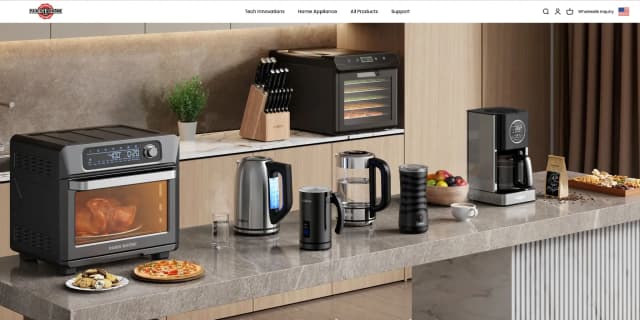
How to choose Indoor Plants
It started with one little succulent… now you’re five carts deep and planning a living wall. Before your place becomes a rainforest café, here are a few things to consider to make sure your new leafy friends actually survive your enthusiasm.
Start at Home, Not in the Store
Before shopping for an indoor plant, decide where it will go by first checking your space. Is the area light or dark? Is it near a window or up against a wall? Consider whether it’s a large or small space. Pay attention to the direction of the light - North, South, East, or West - as this significantly affects which plants will thrive.
Keep in mind that the lighting in plant stores is very different from your home environment, so always note where the plant was placed in the store before buying.
Stick To The Budget
Stick to a budget when shopping for indoor plants - it can make a big difference. Having a list not only helps you avoid impulse buying, but also keeps you focused on finding the right plant for your space and needs. A clear budget gives you direction and helps you stay committed to your plan.
For example, you might really want a certain plant you've been searching for, but if it’s consistently priced at $60 and you feel that’s too high, sticking to your budget gives you the patience to wait for a better deal. Being mindful of your spending helps you make smarter, more intentional choices.
Check Plant Health Carefully
When choosing an indoor plant, get up close and inspect it carefully. Start with the leaves - look for signs of yellowing, wilting, or crispy edges.
A few small blemishes or dead leaves are normal, but avoid plants showing widespread damage or stress. Examine the stems and base for mushy, weak, or overcrowded growth. Trust your instincts - if something feels off about the plant, it’s best to move on.
Don’t forget to check for pests: look under the leaves, in the soil, and around the pot. Sticky residue could indicate scale or mealybugs, while tiny dots or bite marks may point to spider mites or thrips.
Flying insects like fungus gnats or whiteflies are also a red flag. A healthy plant should be free of pests and visible damage.
Match the Plant to Your Lifestyle
For beginners, it's best to start with easy-care plants that are more forgiving and low maintenance. Snake plant is a great choice - it’s hardy and can tolerate a range of conditions, making it ideal for those just starting out. For attentive plant owner, Stromanthe Triostar are another good option, especially as they enjoy regular watering and are quick to signal when they need care.
If you’re new to indoor plants, it’s wise to avoid high-maintenance varieties. Xanadu Philodendron, while beautiful, are known for being fussy and require high humidity and consistent watering. Asparagus Fern are also delicate and demanding, thriving only in specific, humidity-rich environments. Stick to easy plants at first to build confidence and success.
Let the Plant Acclimate (2 - 4 Weeks)
Let your new plant acclimate for 2 to 4 weeks after bringing it home, as it’s adjusting to a series of major environmental changes - from the nursery, to the retail store, and finally to your space. During this transition period, avoid repotting unless it’s absolutely necessary, and hold off on fertilizing for at least the first month (even longer for larger plants).
It’s also a good idea to keep the new plant isolated from others, since pests can still be hiding. Monitor your plant for signs of wilting, curling, or spotting - these are often normal reactions to the change in environment. However, stay alert for signs of pests or rot, which require prompt attention. Give your plant time to settle in before making any big changes.
Why You Should Trust Us
We know you want trustworthy advice when it comes to choosing and caring for indoor plants, so our guides are built on solid research and verified information. We pull insights from expert horticulturists, botanical studies, and reputable plant care sources - no guessing or personal opinions here.
We focus on the essentials: what each plant truly requires and how it fits into your lifestyle and space. This helps us highlight the plants that really stand out for different homes and skill levels.
Most importantly, our advice is completely unbiased. We have no partnerships or financial ties to any plant sellers or brands. Our goal is simple - to give you honest, clear guidance so you can confidently grow your indoor jungle.
Final Thoughts
Whether you're a seasoned plant parent or just getting started, there's something on this list for every space, lifestyle, and level of commitment. Personally, I’ve had most of these in my home at one point or another - and trust me, each brings its own kind of charm.
If I had to recommend one plant for absolutely everyone, it’s the Snake Plant. It’s nearly indestructible, great for air quality, and honestly looks good anywhere. For beginners wanting something a little softer and leafy, the Satin Pothos is a solid pick. It’s fast-growing, flexible with lighting, and just plain pretty.
Have pets? The Stromanthe Triostar or Calathea Rattlesnake are stunning and safe. Just know they like a bit of humidity. And if you’re into propagation and low-fuss care, the Ficus Tineke checks both boxes with that creamy variegation that looks straight-up designer.
At the end of the day, indoor plants aren't just décor - they lift the vibe, clean the air, and give you a reason to pause. Find your matching plants that suit your vibe, green up your space and you’re set.
FAQs
1. Should I water houseplants on a set schedule?
No. Most houseplants don’t like to dry out completely (except cacti and succulents), but overwatering is a bigger risk than underwatering. Check the soil instead - tap the pot, and if it sounds hollow, it’s probably dry. Use lukewarm, preferably filtered, water.
2. Can I take good care of a houseplant if I run a busy schedule?
Yes, if you choose low-maintenance plants. Some houseplants need lots of attention, but many thrive with minimal care. Good low-maintenance options include Mint, Ivy, Cacti, Spider Plants, and Aloe - perfect for busy lifestyles.
3. Are drooping or yellowing leaves a bad sign?
Not always. Yellowing with new growth is normal aging. No growth plus brown, drooping leaves usually means overwatering - let the soil dry. If not water-related, adjust lighting: pale, leggy plants need more light; scorched or brown leaves need less.
4. Should I use regular potting soil for repotting?
Yes, for most houseplants. Regular potting soil works well for most indoor plants. Depending on your plant’s needs, you can mix in organic matter (like compost) to enrich the soil, or add grit (such as perlite or sand) for better drainage. Avoid using “garden soil” products or soil taken directly from the ground, as these can compact easily and may introduce pests or diseases.
5. Can I prevent or deal with flies and fungus gnats?
No, you can’t completely prevent them. While it’s impossible to stop flies and fungus gnats entirely, you can manage them effectively. Raking the top layer of soil with a fork once or twice a week disrupts their breeding cycle. If you spot an infestation, treat the plant with a Neem Oil spray to help control the pests.





















